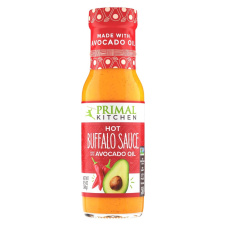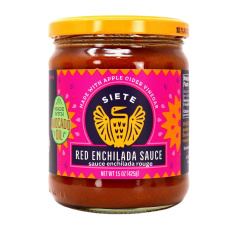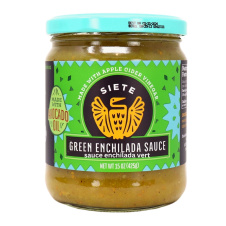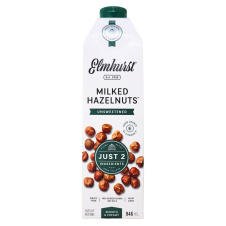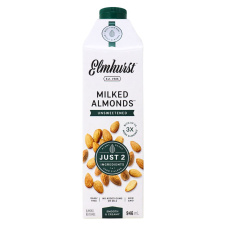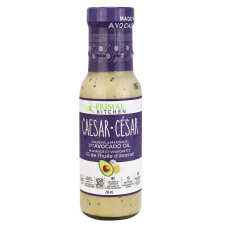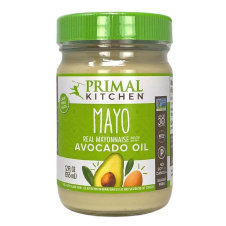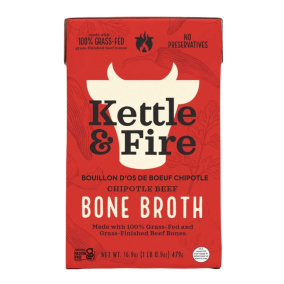
What is Whole30? All Your Questions About Whole30 Answered
It’s Whole30 month, and you’re thinking about hopping on the challenge and marking it on your calendar, but you have some questions on your mind. Should you do Whole30? Should you not? Will it be easy? Hard? What even is the Whole30 diet? Will it work for me? No need to panic, we’re here to help you make a decision. Changing your diet is a lot to think about, so it is important to be well informed. So, we surveyed the internet and compiled all of the most asked questions in one easy guide so you don’t have to go full F.B.I. mode to find the answers to your questions. Here are the top most asked questions about the Whole30 program and their answers:
1. What is Whole30?
The Whole30 plan is a 30-day program intended to help you develop healthy eating habits, cure cravings, eliminate pain, alleviate digestive conditions, promote healthy weight loss, and more. It involves 30 days of self-care where you can establish a healthy relationship with food and discover how to eat to change your life!
2. Who Created the Whole30 Diet?
Melissa Hartwig Urban is the health and fitness expert behind the Whole30 Diet. She is a six-time best selling author and a well-known presence in the health and fitness industry.
3. Who Should Do the Whole30 Diet?
According to our research, all individuals are generally welcomed including vegans, vegetarians, plant-based dieters, and even most pregnant females. However, it is important to note that both pregnant females and those following a strict vegan/plant-based diet will likely be following a modified version of Whole30 not the “real” thing. Pregnant women may require additional snacks and other foods, which are not permitted during Whole30, and other modifications depending on the stage of their pregnancy. Strict vegans will require plant-based proteins to follow the program, which are for the most part, with the exception of peas, not allowed during the program. Nonetheless, the Whole30 program is not recommended for anyone with a history of disordered eating, or with severe health conditions. It is best practice to discuss it with your healthcare team before making any changes to your diet.
4. Whole30 vs. Keto vs. Paleo vs. AIP vs. Vegan
The main difference to note between Whole30 and any of the diets mentioned above is that Whole30 is not intended to be a diet, rather a reset or an experiment. Whole30 was created to help you discover what foods cause your body to feel good, and what doesn’t, otherwise known as an elimination diet. There are many foods, even healthy ones, that could be causing those unknown symptoms and conditions that won’t seem to go away. With Whole30, you can get to the bottom of things and feel good once and for all. Another difference to note is that Whole30 does not involve any sort of calorie restriction or macronutrient tracking. The Whole30 diet was not designed with weight loss in mind, rather it focuses on how food makes you feel physically and emotionally. Another major difference between Whole30 and the diets mentioned is that Whole30 does not involve the long term restriction of foods. Unlike keto, paleo, AIP, or vegan diets, after the 30 days are up, you can slowly reintroduce foods and decide for yourself which ones to keep in your diet.
5. What is Allowed on Whole30?
The Whole30 program involves 30-days of consuming mainly “whole” or unprocessed foods, hence the name. The best foods are any foods with a short ingredient list or with no ingredient list at all. In general, you can consume:
- Proteins: seafood, meat, eggs, peas (snap, green, yellow, snow, split), green beans.
- Produce: fruits, vegetables, fruit juice.
- Cooking Ingredients: herbs, spices, natural seasonings, ghee, clarified butter, vinegar (white, balsamic, apple cider, rice), Gluten-Free Alcohol-Based Extracts (Vanilla, Lemon, Lavender), Salt, and all Coconut Aminos.
6. What is Not Allowed on Whole30?
Whole30 involves eliminating these foods/ingredients from your diet for a short, 30-day period:
- Sugar (real or artificial): maple syrup, honey, agave nectar, coconut sugar, date syrup, monk fruit extract, stevia, Splenda, Equal, Nutrasweet, and xylitol.
- Alcohol/Tobacco: Cooking wines are also not allowed.
- Grains: All wheat, rye, barley, oats, corn, rice, millet, bulgur, sorghum, sprouted grains, and gluten-free pseudo-cereals (quinoa, amaranth, and buckwheat) in any form including bran, germ, starch, and so on.
- Legumes: With the exception of peas, you are not to consume beans (black, red, pinto, navy, garbanzo/chickpeas, white, kidney, lima, fava, cannellini, lentils, adzuki, mung, cranberry, and black-eyed peas); peanuts (including peanut butter or peanut oil); and all forms of soy (soy sauce, miso, tofu, tempeh, edamame, soy protein, soy milk, or soy lecithin).
- Dairy: All cow, goat, or sheep’s milk products like milk, cream, cheese, kefir, yogurt, sour cream, ice cream, or frozen yogurt are off limits.
- Additives: Carrageenan, MSG, or sulfites.
- “Healthy Junk Food”: Avoid “healthier” versions of known junk foods, even if they contain approved ingredients--It is still junk food, just in disguise.
- Stepping on the Scale: The point of Whole30 is not to focus on body composition changes but rather on improving our health. So, no weighing yourself, analyzing body fat, or measuring. However, you may take photos and/or measurements on Days 0 and 31.
7. Why are Grains/ Legumes/ Dairy / Other Foods Not Allowed on Whole30?
The Whole30 program does not allow for grains, legumes, dairy, and the other foods mentioned above because these foods have shown to be problematic for a large percentage of the population. These foods that you see listed have been identified as common food allergens or irritants. Since Whole30 is all about finding what makes your body feel good/bad, it only makes sense to temporarily remove these foods from your diet to see how your body reacts.
8. Can Whole30 Improve Medical Conditions?
There’s a lot of questions regarding Whole30’s ability to lower cholesterol, alleviate allergies, help to manage diabetes, improve gut syndromes and so on. Although Whole30 was not medically designed as a treatment for these conditions it may alleviate symptoms and improve conditions due to improved nutrition and lower inflammation in the body. Many of the conditions listed, can be linked to poor or inadequate nutrition. Therefore, improving your eating habits with Whole30 can result in an improvement in your overall health. Nonetheless, many of these medical conditions require customized specialty diets for effective disease management designed by medical professionals. If you have a medical condition, please talk to your healthcare team prior to making any changes.
9. Why and How Whole30 Works?
Whole30 works by teaching you about your body. With Whole30 you can not only become a pro at reading food labels, but you can learn some valuable long term skills. With Whole30, you can learn to eat mindfully, identify trigger foods, and learn to appreciate food for more than what it can do to the scale to name a few. The Whole30 program allows you to practice healthy decision making and break unhealthy habits for the overall goal of improving your quality of life. And, the best part is that it only requires a 30 day commitment! After you finish the program you’ll be able to slowly return to your regular diet, and you’ll have these skills for life!
10. How Does Whole30 Feel/What to Expect?
The Whole30 program will feel different for everyone. You might experience boosts in energy, better sleep, improved mood, weight loss, improved medical symptoms, and more. But, you could also feel as if your will-power is being tested at times. These moments of weakness tend to occur around the middle of the program. But, it does get easier! Remember that breaking old habits isn’t an easy process. Change is hard. But, once you break through, you’ll feel the freedom knowing that you’ve gained full control over your diet and lifestyle. So, we encourage you not to give up! After all, the best investment that you can make is in yourself! You owe it to yourself to finish! And, we’ll be cheering you on all the way!
11. Whole30 When To Eat?
The Whole30 program was designed with three meals in mind (breakfast, lunch and dinner), and with two snacks (pre-workout and post-workout). According to their guide, you should avoid snacking with the exception of your pre and post-workout snack. They recommend to make your meals balanced (i.e. all macronutrients present on the plate) and to adjust the portion sizes to fill you until your next meal. Additionally, they recommend removing all distractions from meal time (i.e. phone, tv...etc.) to practice mindful eating.
12. Can You Do Whole30 When Sick?
Yes. The Whole30 protocol calls for nutrient-dense foods that can help you overcome your sickness faster. Ensure to prioritize sleep, hydration, and nutrient dense foods. Foods like Whole30-approved bone broth, herbal teas, and eating lots of foods high in zinc, vitamin C, probiotics, and or supplementing if needed can help you feel better faster. Nonetheless, overcoming your condition should be your number one priority. If your healthcare provider recommends any medication that breaks the Whole30 protocols please ensure to follow your healthcare provider’s directions.
13. Can You Do Whole30 While Travelling?
You sure can! It just might require some extra preparation! You’ll need to plan ahead some portable and potentially air-plane approved meals to take along with you. If you’ll be dining out, you’ll also need to notify your server of your dietary restrictions and make adjustments to your meal as needed. And, if you ever have a no Whole30-approved food emergency, RX bars will become a life saviour!
14. Whole30: How To Reintroduce Foods?
This is the most important part of the Whole30 process. The re-introduction phase occurs after you’ve completed your 30-day reset. However, it is important to note that this isn’t your free-for-all, binging period. This is the time to really examine your body and how it reacts to certain foods. According to their guidelines, you can either undergo a fast or a slow re-introduction period. In both the fast and slow reintroduction phases, you will be adding back the foods that were eliminated during the Whole30 program. The only difference is that for the fast reintroduction, you’ll only have 10 days to re-introduce all the food, while in the slow reintroduction you can take your time. Nonetheless, you have to be careful during this time not to lose all your hard work. If you reintroduce too much at once or too many complex foods (i.e. foods containing more than one potential trigger ingredient) you could end up more confused than when you started. We recommend keeping a food diary to note what you ate and how you felt before and after eating it. Start with more simplified foods then move on to more complex foods if appropriate.
15. Whole30: How to Start?
Ah, so we’ve convinced you to give your body the reset that it needs! We’re happy to see that you’re finally on board! Starting Whole30 is easy! All you have to do is mark it in your calendar and turn your kitchen into a Whole30-approved kitchen! You’ll want to get prepared by getting your shopping list ready. If you’re looking for Whole30-approved food in Canada that can make the process a little easier, then Natura Market is where you’ll need to go. At Natura Market, there is already a pre-made, Whole30-approved section for you to shop from, so you can save yourself the hassle of reading the nutrition labels. And, you’re just on time to start--September is Whole30 month! You can join a whole community of dedicated members that will go through this journey through September with you and support you along the way! And, we’re here to hold your hand along the way! With Natura Market, the Whole30 challenge is a breeze! Get started here!



